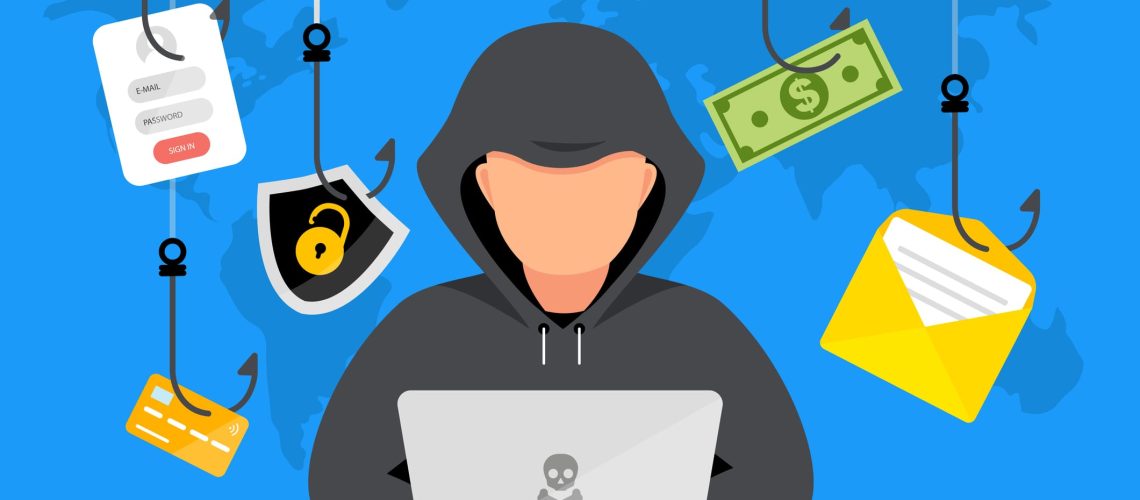Phishing scams remain among the most prevalent and successful types of cyberattacks today, so being aware of their danger to businesses like yours is crucial. Your business could easily be the next victim if you don’t understand how threat actors leverage phishing emails.
In this blog, you’ll learn the intent behind phishing emails, the various types of phishing attacks, and, most importantly, how to secure your email and business.
The goal behind phishing emails
Cybercriminals use phishing emails to lure unsuspecting victims into taking actions that will affect business operations, such as sending money, sharing passwords, downloading malware, or revealing sensitive data. The primary intent behind a phishing attack is to steal your money, data, or both.
Financial theft — The most common aim of a phishing attempt is to steal your money. Scammers use various tactics, such as business email compromise (BEC), to carry out fraudulent fund transfers or ransomware attacks to extort money.
Data theft — For cybercriminals, your data, such as usernames and passwords, identity information (e.g., social security numbers), and financial data (e.g., credit card numbers or bank account information), is as good as gold. They can use your login credentials to commit financial thefts or inject malware. Your sensitive data can also be sold on the dark web for profit.
Be vigilant and look out for these phishing attempts:
- If an email asks you to click on a link, be wary. Scammers send out phishing emails with links containing malicious software that can steal your data and personal information.
- If an email directs you to a website, be cautious. It could be a malicious website that can steal your personal information, such as your login credentials.
- If an email contains an attachment, be alert. Malicious extensions disguised as a document, invoice, or voicemail can infect your computer and steal your personal information.
- If an email tries to rush you into taking an urgent action, such as transferring funds, be suspicious. Try to verify the authenticity of the request before taking any action.
Different types of phishing scams
It’s important to note that phishing attacks constantly evolve and can target businesses of all sizes. While phishing emails are a standard method cybercriminals use, they also use texts, voice calls, and social media messaging.
Here are the different kinds of phishing scams that you should watch out for:
Spear phishing — Scammers send highly personalized emails targeting individuals or businesses to convince them to share sensitive information such as login credentials or credit card information. Spear phishing emails are also used for spreading infected malware.
Whaling — A type of spear phishing, whale phishing, or whaling is a scam targeting high-level executives where the perpetrators impersonate trusted sources or websites to steal information or money.
Smishing — An increasingly popular form of cyberattack, smishing uses text messages claiming to be from trusted sources to convince victims to share sensitive information or send money.
Vishing — Cybercriminals use vishing or voice phishing to call victims while impersonating somebody from the IRS, a bank, or the victim’s office, to name a few. The primary intent of voice phishing is to convince the victim to share sensitive personal information.
Business email compromise (BEC) — A BEC is a spear phishing attack that uses a seemingly legitimate email address to trick the recipient, who is often a senior-level executive. The most common aim of a BEC scam is to convince an employee to send money to the cybercriminal while making them believe they are performing a legitimate, authorized business transaction.
Angler phishing — Also known as social media phishing, this type of scam primarily targets social media users. Cybercriminals with fake customer service accounts trick disgruntled customers into revealing their sensitive information, including bank details. Scammers often target financial institutions and e-commerce businesses.
Brand impersonation — Also known as brand spoofing, brand impersonation is a type of phishing scam carried out using emails, texts, voice calls, and social media messages. Cybercriminals impersonate a popular business to trick its customers into revealing sensitive information. While brand impersonation is targeted mainly at the customers, the incident can tarnish the brand image.
Bolster your email security
Emails are crucial for the success of your business. However, implementing email best practices and safety standards alone can be challenging. That’s why you should consider partnering with an IT service provider like us. We have the resources and tools to protect your business from cyberattacks, helping you focus on critical tasks without worry. Contact us now!
Meanwhile, to learn how to secure your inbox, download our eBook — Your Guide to Email Safety — that will help you improve your email security and avoid potential traps.


















